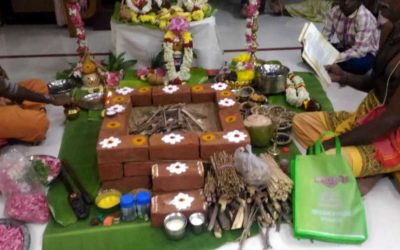The Centre’s regulatory body for traditional medicine has decided to throw open its ayurveda medicine degree courses to students schooled exclusively in Sanskrit who, if selected, will have to spend an extra year learning physics, chemistry and biology.
The Central Council of Indian Medicine (CCIM) decided in its meeting on Friday that scholars who have cleared the Uttar Madhyamaor Prak Shastri, among other such qualifications equivalent to the 10-plus-2 level senior secondary exam will now be eligible for a “pre-Ayurveda course”.
Dozens of schools across India, including eight in Bengal and 12 in Bihar, affiliated to the Rashtriya Sanskrit Sansthan, offer the Uttar Madhyamaor Prak Shastri courses that offer subjects primarily in Sanskrit, but also provide students limited exposure to subjects such as English, economics, science, mathematics, biology, and geography.
“We’re opening doors to students of Sanskrit,” said Ved Prakash Tyagi, president of the CCIM. “This move will help students who have been kept out until now to learn ayurvedic medicine. This will also help enrich traditional medicine through their knowledge of Sanskrit.”
The Centre had in May this year pointed out to the CCIM that major ancient texts on Ayurveda, such as the Ayurvedic Samhita, are written in Sanskrit and few Ayurvedic scholars were available to interpret the original text. It had also suggested that the CCIM should consider opening its five-year degree course leading to the award of Bachelor of Ayurvedic Medicine and Sciences (BAMS) to students studying Sanskrit courses in traditional Gurukul schools affiliated to state boards or universities.
India has about 290 Ayurveda colleges that each year accept around 10,000 students who, under government rules, are as qualified to practise traditional medicine as students who obtain the Bachelor of Medicine, Bachelor of Surgery (MBBS) degree are qualified to practise modern medicine.
The Union ministry for Ayush (Ayurveda, Yoga, Unani, Siddha and Homeopathy), in interactions with the CCIM, has expressed its support for the provision of a pre-Ayurveda course that would be opened to students of Sanskrit in select Ayurveda colleges, Tyagi said.
“It was felt that students from a Sanskrit background should be given an opportunity to study medicine after exposing them to physics, chemistry and biology for one year through the new pre-Ayurveda course,” Prajapati Tripathy, principal of the Dayanand Ayurveda College and Hospital, Siwan (Bihar), told The Telegraph.
The CCIM expects that the proposed increase in the number of Ayurveda colleges will help compensate for the increased competition for seats when they are opened to Sanskrit students. “We have plans to establish 65 Ayurveda colleges, which will mean at least about 5,000 additional seats,” Tyagi said. He said the move might be implemented from the 2017 academic year.
Some CCIM members, however, voiced concern over the impact of the longer duration of the course. Students now take five-and-a-half years to complete the BAMS degree, but the Sanskrit scholars would need to study an extra year, thus requiring them to stay in college for six-and-a-half years.
“If there are any mid-course issues, such as exam delays, the course may take seven or eight years which is a very long time to graduate,” Basant Singh, an Ayurvedic practitioner and CCIM member from Muzaffarpur, Bihar, said.
Singh pointed out that in Bihar, 2009 students of the existing five-and-a-half-year course graduated in 2016.




0 Comments